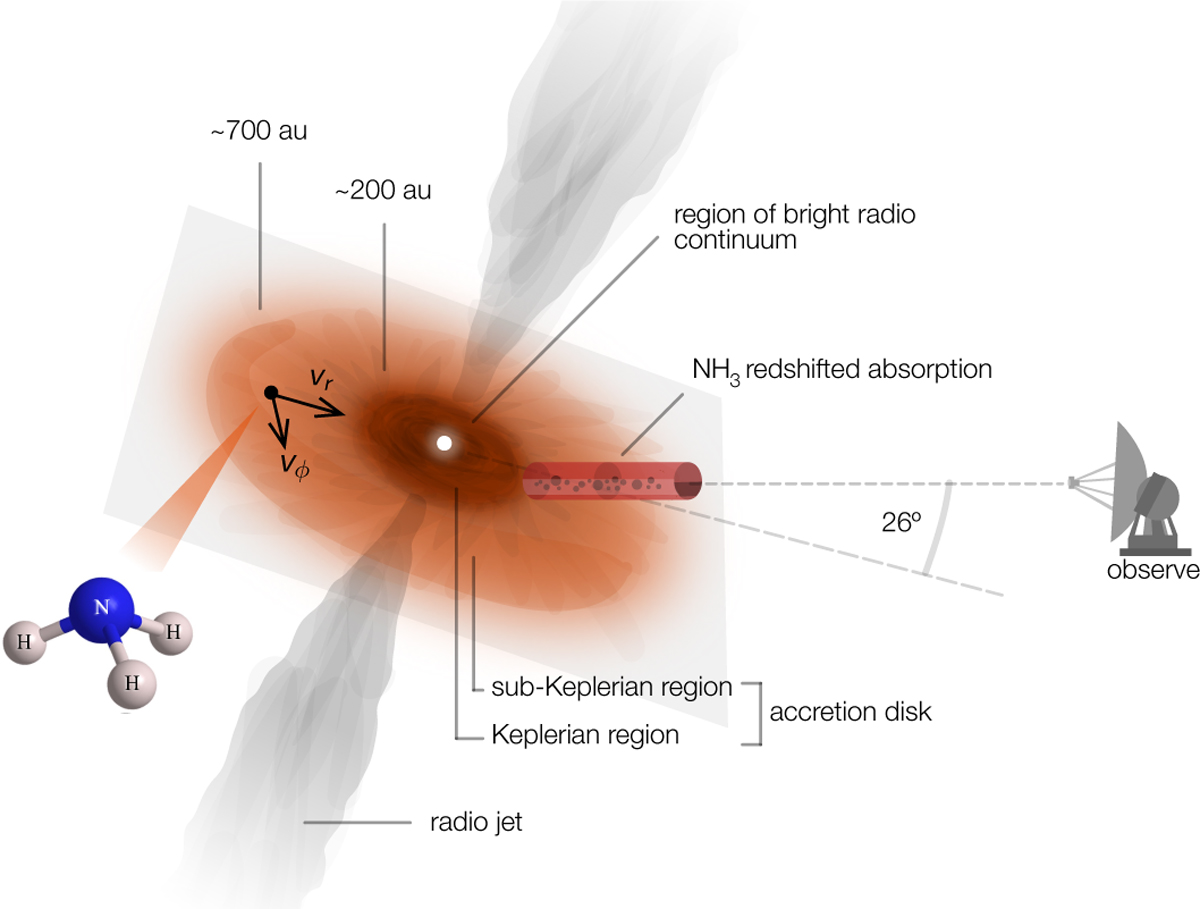Fig. 3

Download original image
Cartoon of the star formation scenario around HW2, where the observer is placed to the right for clarity. The line-of-sight to HW2, slightly above the disk mid-plane by 26° (Sanna et al. 2017), crosses a column of NH3 gas infalling in front of a region of bright continuum emission, confined inside the inner 200 au. At larger radii, the observer maps emission from NH3 gas (molecular structure sketched to the left), which is both infalling (vr) by gravity toward the central star and rotating (vϕ) at sub-Keplerian velocities. Atomic (ionised) gas is also ejected away along the general direction of the system angular momentum, with a lobe of blue-shifted (approaching to the observer) gas to the north and one of red-shifted (receding) gas to the south (e.g., Gómez et al. 1999).
Current usage metrics show cumulative count of Article Views (full-text article views including HTML views, PDF and ePub downloads, according to the available data) and Abstracts Views on Vision4Press platform.
Data correspond to usage on the plateform after 2015. The current usage metrics is available 48-96 hours after online publication and is updated daily on week days.
Initial download of the metrics may take a while.


